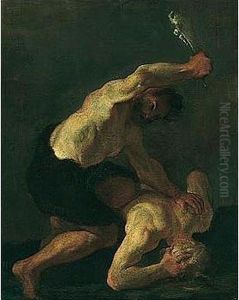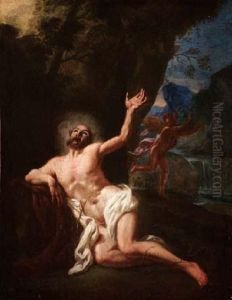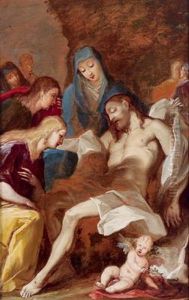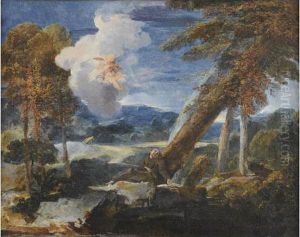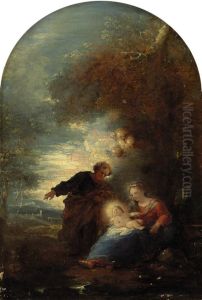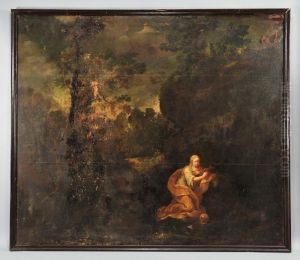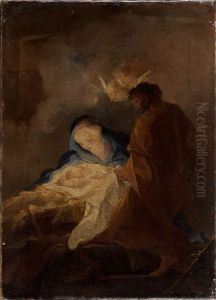Pierre Louis Cretey Paintings
Pierre Louis Cretey was a French painter, primarily known for his work in the Baroque style, which was prominent in European art from the early 17th until the mid-18th century. Cretey's exact birth date is not well-documented, but he is believed to have been born around 1638 in Lyon, France. His death is recorded as having occurred in 1714.
Cretey's artistic career is somewhat obscure due to the limited information that survives about his life and work. However, it is known that he was active in Lyon, which was then a significant cultural and artistic center in France, second only to Paris. His work was influenced by the prevailing Baroque sensibilities of the time, characterized by dramatic expression, rich coloration, and dynamic composition.
Despite the lack of extensive records, Cretey is noted for his contributions to religious art, particularly in the decoration of churches. His style is recognized for its theatricality and emotional intensity, which were hallmarks of the Baroque movement. He was skilled in creating the illusion of depth and movement, which brought his religious scenes to life and engaged the viewer.
Unfortunately, Cretey did not achieve the same level of fame as some of his contemporaries, and as a result, his works are not as well-known or as widely studied. Nevertheless, he remains a figure of interest for art historians who specialize in the Baroque period and in the regional art history of Lyon. Today, his surviving works are considered important for understanding the scope and variety of French Baroque painting, especially in a provincial context away from the dominant art scene of Paris.
